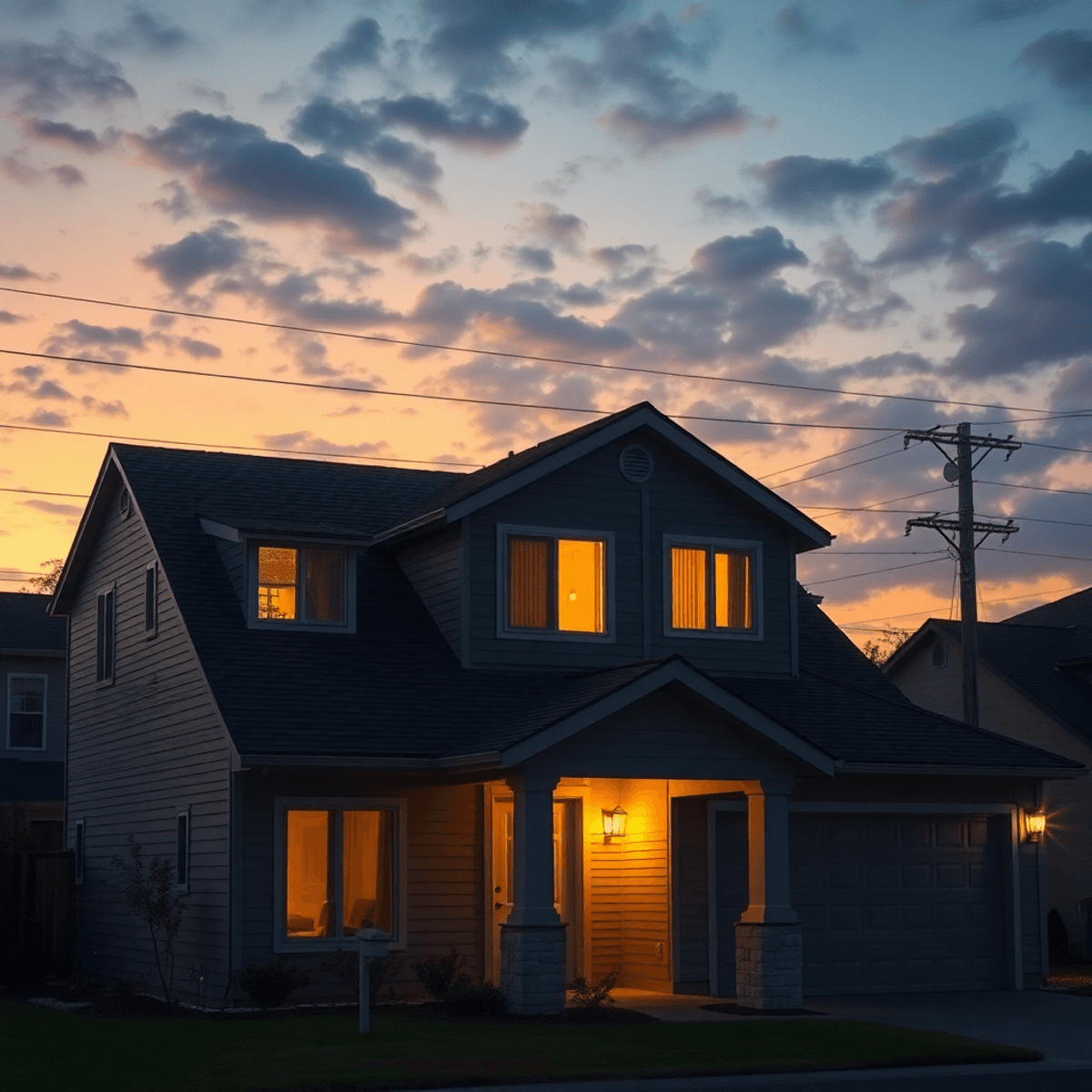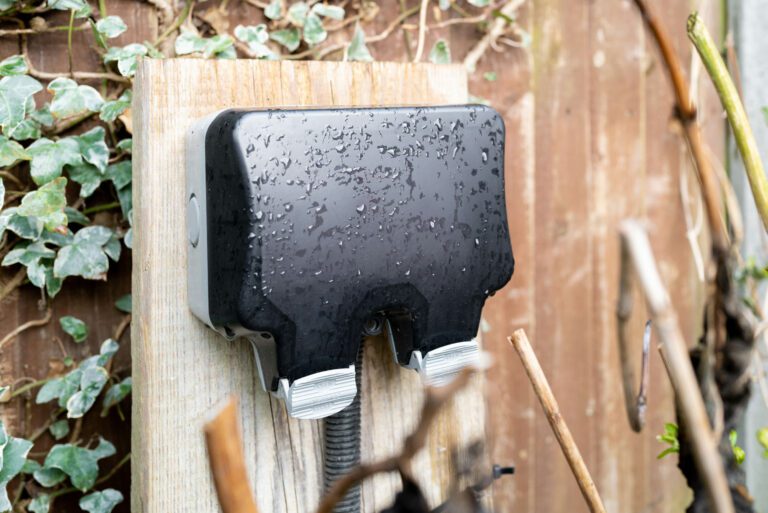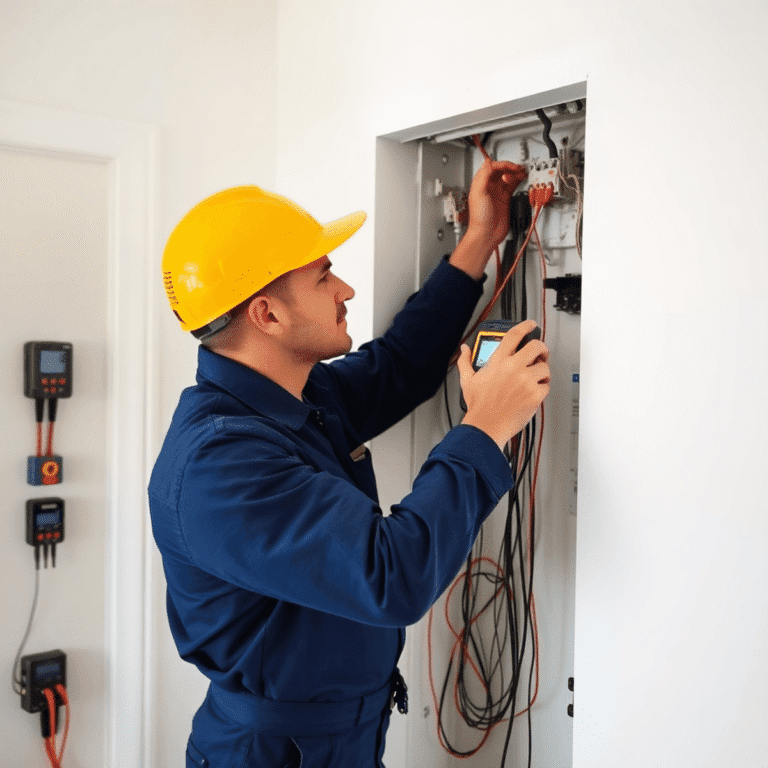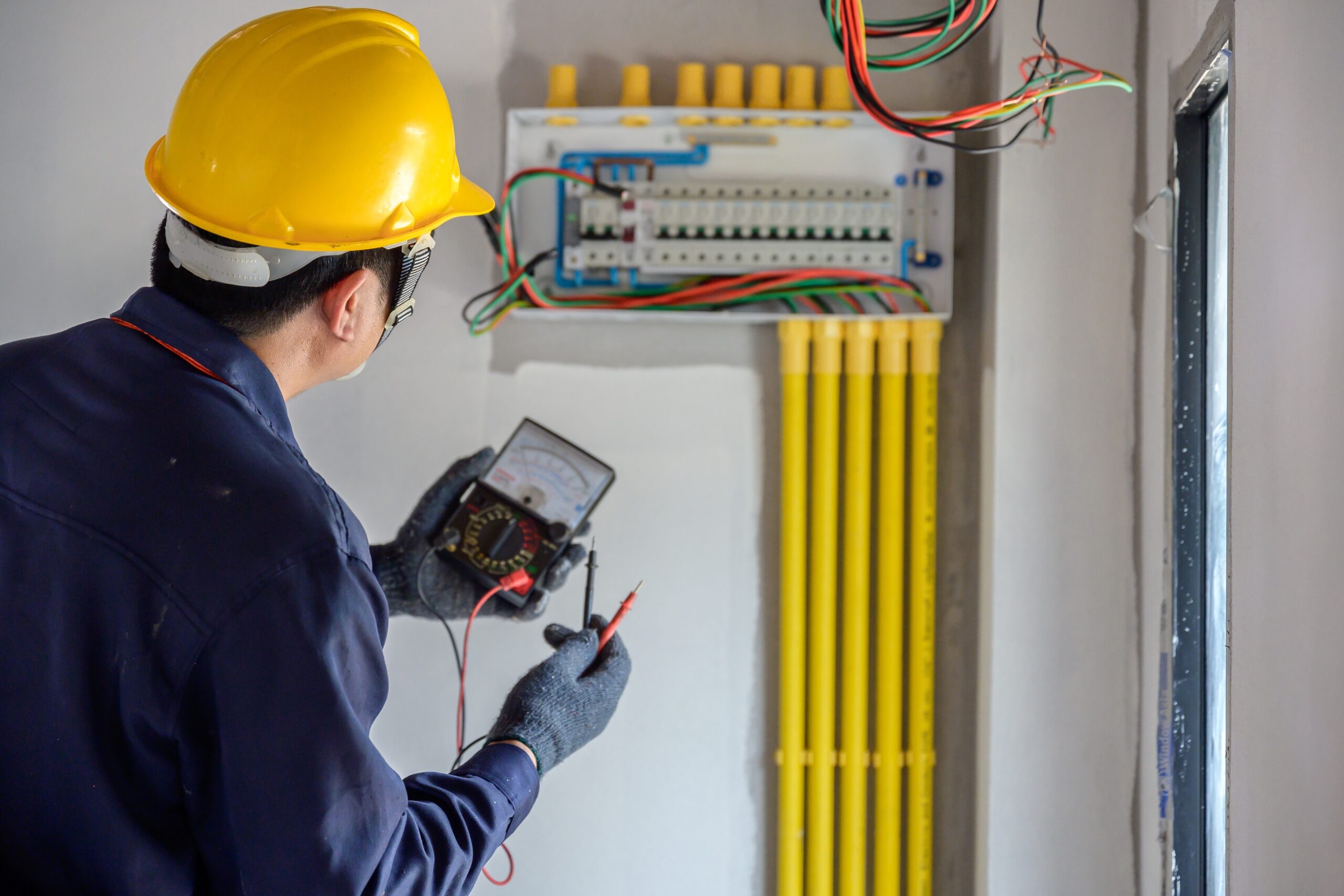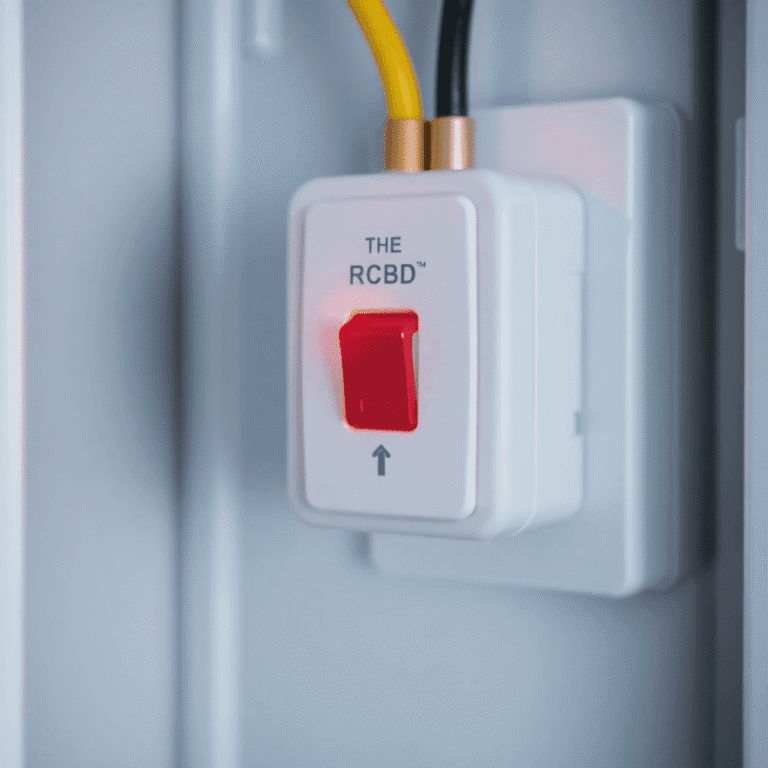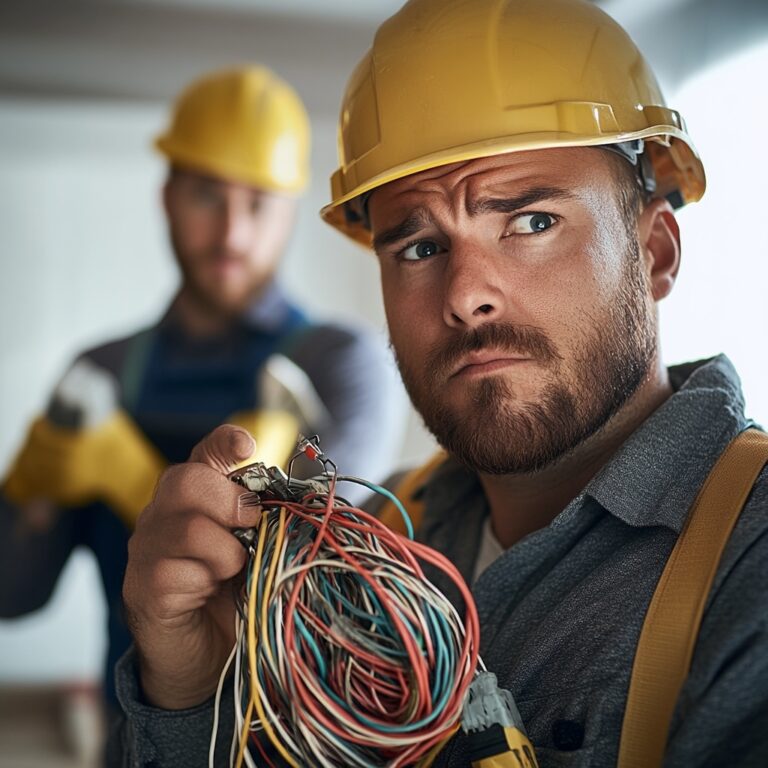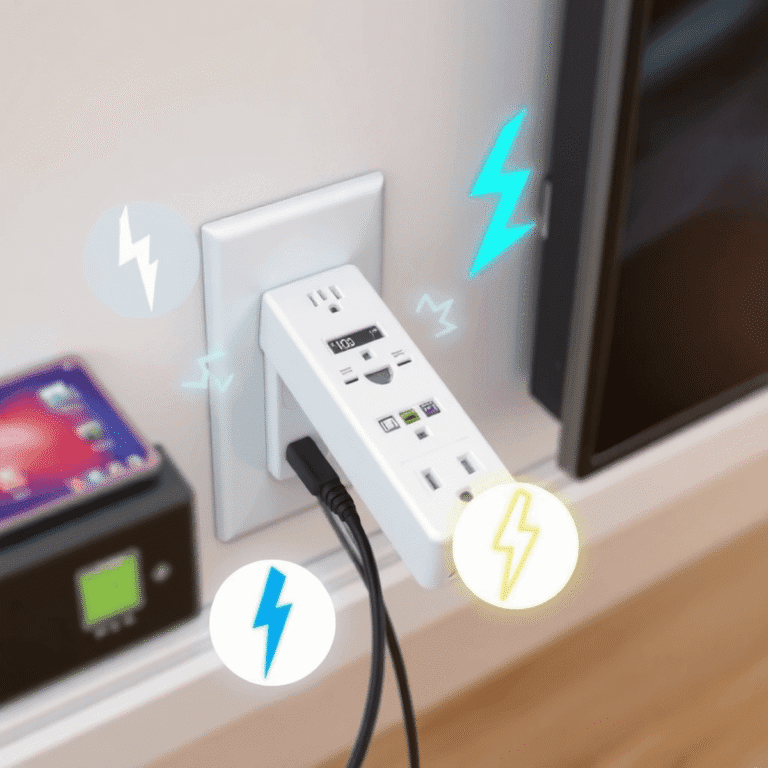What Happens When Your House Experiences a Brownout
A brownout is a temporary drop in voltage, typically between 10-25%, which can have various effects on your household’s electrical systems. Unlike a blackout, where there is a total loss of power, a brownout means your electrical devices still receive power, but at reduced levels.
Understanding brownouts is crucial for homeowners because they can impact everything from the functionality of your appliances to the safety of your home’s electrical system. This article will delve into the causes of brownouts, their effects on your home and appliances, and practical steps you can take to protect your property. By being informed, you can mitigate potential damage and ensure the safety and efficiency of your electrical systems.
If you’re experiencing frequent brownouts or other electrical issues, it might be time to consult with professionals who can provide expert advice and solutions. Don’t hesitate to contact us for assistance.
Understanding Brownouts: Causes and Effects on Your Home
A brownout is a temporary drop in voltage, usually between 10-25%. Unlike a blackout, which is a complete loss of power, brownouts only involve partial power reduction. These events can last from a few seconds to several hours and happen more often than blackouts.
Causes of Brownouts
Several factors contribute to brownouts:
- High Electricity Demand: During peak times or heatwaves, there is often an increased demand for electricity. This surge can strain the power grid, leading utility companies to reduce voltage to prevent a total blackout.
- Weather Events: Severe weather conditions such as storms or extreme heat can disrupt the power supply and affect power quality, causing brownouts.
- Utility Voltage Reduction: Utility companies may intentionally lower the voltage as a preventive measure against potential blackouts. This controlled reduction helps manage the load on the electrical grid.
- Local Electrical Faults: Issues within your home’s electrical system can also lead to brownouts. Common problems include overloaded circuits or faulty wiring. Regular maintenance can help identify these faults early.
Why Homeowners Should Care
Recognizing these causes is crucial for homeowners. By understanding what leads to brownouts, you can take proactive measures to protect your home and appliances from potential damage.
How Brownouts Affect Your Home and Appliances
Brownout effects on home appliances during brownout events are immediate and often easy to spot. When voltage drops below normal levels, common household devices don’t perform as expected.
Signs of Brownouts in Your Home
Here are some typical signs that indicate a brownout is affecting your home and appliances:
- Flickering or Dimmed Lights: One of the first signs is inconsistent lighting. LED and incandescent bulbs may flicker or appear noticeably dimmer.
- Slower or Malfunctioning Appliances: Electric fans slow down, refrigerators might hum loudly or cycle irregularly, and microwaves struggle to heat food properly.
- Intermittent Internet Connectivity: Modems and routers rely on stable voltage. During a brownout, your Wi-Fi may drop out unexpectedly, affecting everything from streaming to smart home systems.
- Risk of Damage to Sensitive Electronics: Devices with microprocessors—TVs, computers, gaming consoles—are at risk. Unstable voltage can cause abrupt shutoffs, resets, or even long-term component failure.
- Overheating Motors in Appliances: Air conditioners, washing machines, and refrigerators use electric motors that are sensitive to low voltage. Prolonged operation during a brownout can lead to overheating, reduced efficiency, and early motor burnout.
The Impact of Brownouts on Your Home
Even short-duration brownouts can leave lasting impacts on modern homes packed with electronics. Being alert to these typical signs helps protect both your comfort and your investment in appliances. Recognizing these issues early can prevent more serious problems when the next power dip hits.
Potential Damage Caused by Brownouts and Protective Measures You Can Take
Unstable voltage during a brownout can lead to significant long-term damage, particularly to motors and electronics. When the voltage drops below normal levels, appliances such as refrigerators may experience compressor damage. This occurs because the compressor motor is forced to work harder to maintain its function, potentially leading to overheating and failure. Similarly, sensitive electronics like computers may reset or malfunction, resulting in data loss or hardware damage.
Practical Steps During a Brownout
Taking immediate action during a brownout can help minimize potential damage:
- Unplug Sensitive Electronics: Disconnect devices such as computers, televisions, and other sensitive electronics. This prevents voltage fluctuations from causing harm.
- Reduce Power Consumption: Turn off major appliances like air conditioners, washing machines, and dryers to reduce overall power demand and protect motors from overheating.
- Use Surge Protectors: Equip your home with surge protectors to shield your electronics from sudden voltage spikes when power is restored.
By implementing these measures, you can mitigate the risk of electrical damage from brownouts and safeguard your appliances and sensitive electronics.
Preventative Measures to Minimize Brownout Impact and Staying Informed During Power Issues
Proactive steps reduce the risk of brownout-related damage and maintain electrical safety at home. Addressing vulnerabilities before an issue arises keeps your appliances, electronics, and family protected.
Annual Electrical Inspections: Why They Matter
Certified electricians in Melbourne recommend yearly inspections to catch potential hazards early. Faulty wiring, loose connections, and overloaded circuits are common culprits behind electrical instability. A comprehensive inspection by experienced professionals like those at Protek Electrical and Data delivers several benefits:
- Early detection of wiring faults or wear that could worsen during brownouts
- Identification of outdated switchboards or circuit breakers prone to failure
- Verification that your system meets current electrical safety standards
Upgrades suggested after inspections—such as modern switchboard installations or new circuit breakers—reduce the impact of voltage drops and prevent dangerous surges from reaching sensitive devices.
Backup Power Solutions for Peace of Mind
Power interruptions are less disruptive with reliable backup options. Consider these solutions:
- Generators: Automatically supply power during outages or severe brownouts, ensuring critical appliances remain operational.
- Solar Systems with Battery Storage: Store excess solar energy for use when the grid voltage dips, providing clean, uninterrupted electricity independent of utility fluctuations.
- Whole House Surge Protectors: Installed at your switchboard, these devices guard against sudden voltage spikes once power stabilizes.
Engage professional electrical services familiar with Melbourne’s requirements to ensure safe installation and compliance.
Staying Alert and Prepared
Awareness is key during brownout-prone conditions:
- Sign up for notifications from your utility company about planned or unplanned voltage reductions.
- Keep emergency communication devices—such as fully charged mobile phones or battery-powered radios—within easy reach.
- Prepare an emergency kit with essentials like bottled water, non-perishable food, flashlights, and spare batteries that do not rely on home electricity.
Taking these steps not only prevents brownout damage but also equips you to respond effectively when power issues arise.
Conclusion
Understanding what happens when your house experiences a brownout is crucial for maintaining electrical safety and protecting your appliances. Regular preventative maintenance, such as:
- Annual electrical inspections by certified electricians
- Upgrading switchboards and circuit breakers
- Installing backup power sources like generators or solar systems with battery storage
can significantly reduce the risks associated with brownouts. Utilizing professional services ensures that potential issues are identified and addressed promptly.
Additionally, staying informed about planned or ongoing voltage reductions from your utility company helps you prepare effectively. Implementing these protection tips will safeguard your home and enhance its resilience against power fluctuations.
FAQs (Frequently Asked Questions)
What is a brownout and how does it differ from a blackout?
A brownout is a temporary drop in voltage, typically between 10-25%, causing dimmed lights and slower appliance operation. Unlike a blackout, which is a full power loss, brownouts are partial reductions in electrical supply that usually last for shorter durations.
What causes brownouts in residential homes?
Brownouts can be caused by high electricity demand during peak times, weather events like heatwaves or storms affecting power quality, utility companies intentionally reducing voltage to prevent blackouts, and local electrical faults such as overloaded circuits or faulty wiring.
How do brownouts affect household appliances and electronics?
During a brownout, you may notice flickering or dimmed lights, slower or malfunctioning appliances, intermittent internet connectivity, and an increased risk of damage to sensitive electronics. Motors in appliances can overheat due to unstable voltage, potentially leading to long-term damage.
What potential damage can brownouts cause to home electrical systems?
Unstable voltage during brownouts can cause long-term damage especially to motors and sensitive electronics. Examples include compressor damage in refrigerators and unexpected resets in computers. Overheating motors and voltage fluctuations increase the risk of appliance failure.
What protective measures can homeowners take during a brownout?
Homeowners should unplug sensitive electronics to avoid damage from voltage fluctuations and reduce overall power consumption by turning off major appliances. Installing backup power sources like generators or solar systems with battery storage also helps minimize impact.
How can I prevent or minimize the impact of brownouts at home?
Preventative strategies include annual electrical inspections by certified electricians to detect wiring faults early, upgrading switchboards and circuit breakers, installing backup power solutions, monitoring utility company notifications about planned voltage reductions, and preparing emergency kits with essentials that do not rely on electricity.

